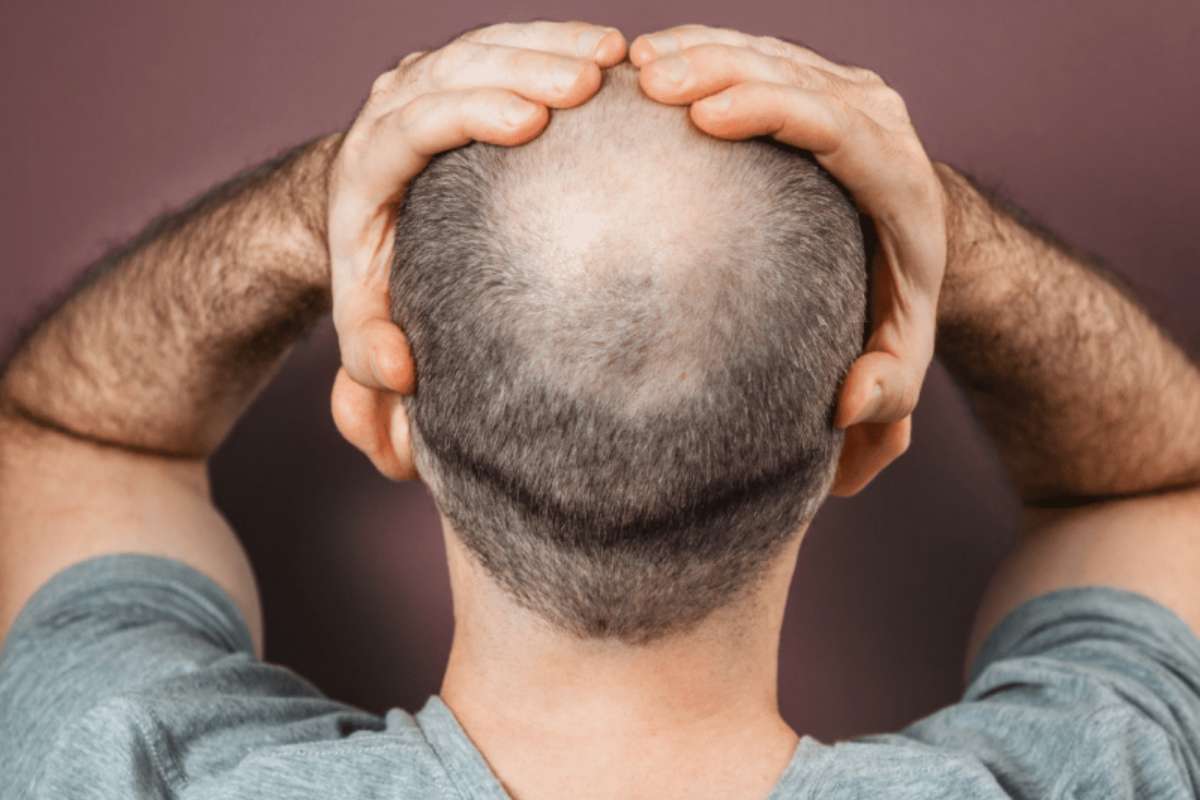Finding a gray hair is one of those things that nobody wants to experience, but everyone knows they will at some point. As we begin to age the pigment cells (melanocytes) in the hair follicles begin to get a little lazy. We don’t like to say ‘old,’ but when melanocytes in the follicles age, they produce less pigment (melanin) which means less color is produced.
With each cycle of hair falling out and regrowing, you will start to see single strands of “gray” hair mixed with your natural hair. These so called “gray hairs” are actually white or translucent because they lack melanin; they’re not really gray. But when white hairs are mixed with brown or black hairs it takes on a gray appearance because of the mixture of “salt and pepper.”
Once the melanocytes in your hair follicles fail to product pigment there’s no bringing them back. Although, there are some cancer patients who have experienced return of their color while undergoing some newer chemotherapies (stay tuned for future blog on this) For now, coloring, or dying, your hair is the only way to blend those gray hairs back to your natural hair color. This is just one of those natural but unstoppable effects of aging that everyone will have to deal with at some point in their lives.
But what about those first few gray hairs that start to show themselves? Is it safe to pluck them if there’s only a couple and it’s not worth dying or coloring your hair? Will pulling them out eventually cause your hair to start thinning?
Is it Ok To Pluck Gray Hairs?
Overall, we don’t recommend plucking out hairs from your scalp, especially if you’re getting older and start to notice gray hairs.
Sure, plucking the first couple that you notice after you turn 30 is probably not going to be a big deal, but as you continue to age and you continue to develop more and more gray hairs, plucking is not a viable option to prevent yourself from going gray, and it could actually lead to problems down the line.
Pulling those gray hairs in your scalp is only going to be a temporary solution because the follicle that produced that hair is still in your scalp and will continue to grow gray hair once the cycle restarts. In addition to that, plucking hairs on your scalp could lead to bigger problems.
Pulling hairs is traumatic, though on a small scale, but inflammation of the follicle can lead to pustule formation or acne-like bumps which could lead to scarring or post-inflammatory hyperpigmentation which could leave spots of red, brown, and even blue-gray patches. If you were worried about your gray hairs, how are you going to feel when you have thinner hair or blotchy skin on your scalp?
Can Plucking Gray Hairs Cause Hair Loss?
If you’re a serial plucker and you’re constantly plucking every gray hair you see appear on your scalp, there is a chance you could experience hair thinning because of this.
Each time you pluck a hair on your head the follicle remains in your scalp and will eventually start to grow back after about three months. Every time the follicle restarts the hair growth cycle, the hair becomes a little bit thinner. After consistently plucking the same hair for a long period of time it will eventually stop regrowing and that will be it.
Once a follicle is dead it will never grow hair again.
So while plucking a gray hair every once in a while may not lead to hair thinning, if you’re constantly plucking every single gray hair you see, every time it grows back, then you may eventually start to notice some thinning in those areas.
Does Pulling Gray Hairs Make More Appear?
There is this old myth that plucking out gray hairs is bad because it will make more gray hairs sprout up around that area.
This is false.
It probably comes from the same idea that cutting your hair, or shaving your hair, makes your hair grow in thicker, which is also false.
Plucking a single gray hair will not cause more gray hairs to magically start sprouting from that same spot. You may notice more gray hairs in that area for a couple reasons though. The hair follicles around that gray hair may have also started to lose their pigment at the same time and you just hadn’t noticed yet. Or you may have accidentally plucked more than one hair, so when the new ones start growing back it may seem like the magically turned gray.
Don’t worry though, plucking a single gray hair on your scalp will not cause a field of gray hairs to start appearing in that area. One hair grows from a single follicle, so as long as you only pluck that single hair, you’ll only have one hair growing back.
Safe Ways to Deal With Gray Hair
As you can tell, we do not recommend plucking or pulling hairs out of your scalp, or anywhere for that matter. The act of plucking causes trauma to the hair follicle and can lead to infection, redness, discoloration, and even eventual hair thinning if done continually.
If you’re really concerned about a single new gray hair that has appeared and you want to get rid of it, we recommend very carefully cutting it as close to the scalp as possible. This will help prevent the damage that pulling it could cause and it will make the hair far less noticeable to the people in your life.
If you’ve started to notice a gray patch, or multiple gray hairs appearing on your scalp, the best course of action would be to color or dye your hair. There are temporary and permanent dyes for all- over color but there are also spray on colors, powders and pastes that are helpful to “touch-up” gray roots or to cover small areas of gray that many of Dr. Krejci’s patients find to be very helpful. This is really the only way to keep your “natural” hair color as you begin to age as gray hairs are just a part of life.
Chances are if you see an older person with zero gray hairs on their head, they are most likely dying their hair to keep their youthful appearance. You may actually be surprised at how many older folks color their hair while not making it too obvious.
Gray hair is a natural part of life, so you’ll either have to embrace it or use hair products to help conceal it.
If you start to notice hair thinning because you’ve been plucking those gray hairs for a while, it may be time to setup a consultation with a hair transplant specialist to figure out the best way to help prevent more hair loss, or to help restore the hair that you’ve already lost.







